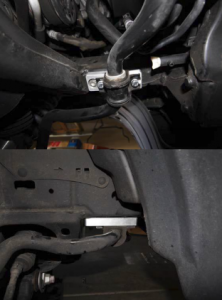When lifting a pickup truck, it is important to drop the differential to maintain proper drivetrain and suspension geometry. This is because lifting a pickup truck will change the angle of the drivetrain and suspension components, which can affect their performance and cause premature wear or failure.
Dropping the differential refers to lowering the position of the differential relative to the axles and wheels. This helps to maintain the correct angle of the driveshaft and other drivetrain components, which ensures that they can operate smoothly and efficiently.
In addition, dropping the differential also helps to maintain the correct suspension geometry and ride height. This is because lifting a pickup truck will change the angle of the suspension components, such as the control arms and springs, which can affect their ability to absorb road impacts and maintain a stable ride. By dropping the differential, the suspension components can be adjusted to compensate for the change in ride height and maintain a balanced and stable ride.
Overall, dropping the differential when lifting a pickup truck is important to maintain proper drivetrain and suspension geometry, ensure smooth and efficient operation of the drivetrain, and maintain a balanced and stable ride.









